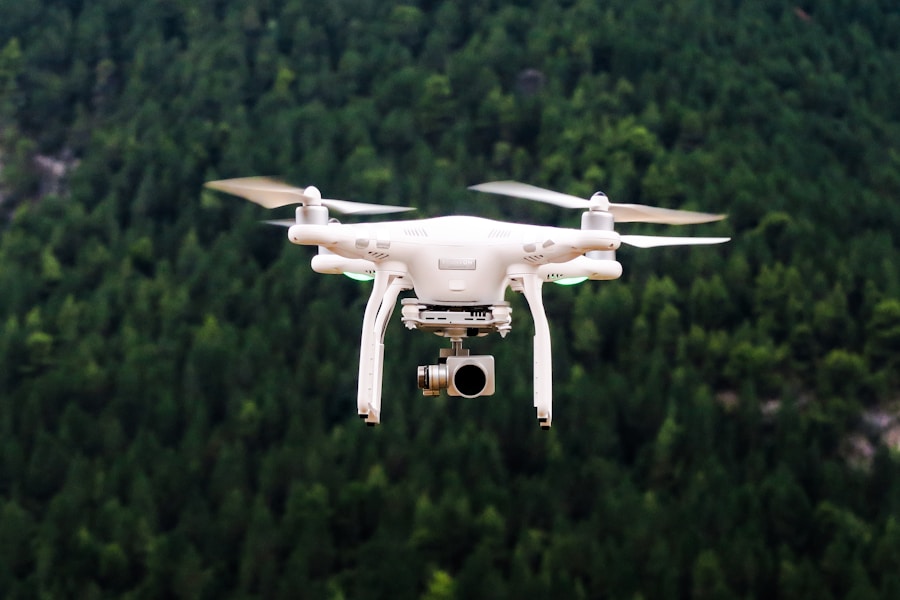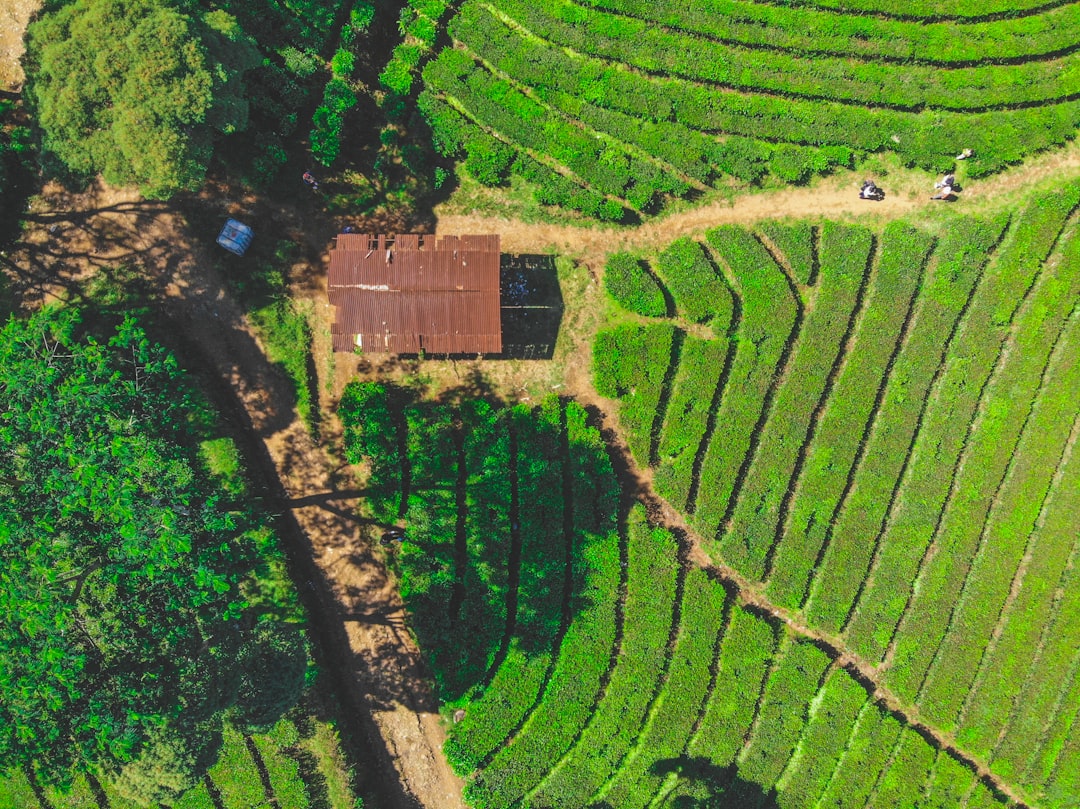Agricultural drone-based pesticide spraying has transformed the way farmers manage their crops and control pests. Drones equipped with pesticide spraying capabilities offer several advantages, including enhanced efficiency, reduced labor costs, and improved precision in pesticide application. By utilizing drones for pesticide spraying, farmers can cover extensive areas of farmland in a significantly shorter timeframe compared to traditional methods.
This not only saves time and labor but also enables more frequent and targeted pesticide applications, resulting in better pest control and higher crop yields. Moreover, agricultural drone-based pesticide spraying can substantially reduce the amount of pesticides required to treat crops. Drones are equipped with advanced technology that facilitates precise and targeted spraying, minimizing pesticide drift and runoff.
This not only reduces farmers’ pesticide costs but also decreases the environmental impact of pesticide use. Additionally, drones can access remote or hard-to-reach areas of farmland that may be challenging for traditional pesticide application methods, ensuring that all crops receive the necessary treatment. Overall, the benefits of agricultural drone-based pesticide spraying are evident, making it an increasingly popular choice among modern farmers.
Key Takeaways
- Agricultural drone pesticide spraying offers benefits such as precision, efficiency, and reduced human exposure to chemicals.
- Selecting the right drone and pesticide is crucial for effective spraying, considering factors such as payload capacity and formulation compatibility.
- Safety precautions and regulations must be strictly followed to ensure the safe operation of agricultural drone pesticide spraying.
- Planning and executing a successful pesticide spraying mission with drones involves careful consideration of weather conditions and target areas.
- Monitoring and evaluating the effectiveness of drone pesticide spraying is essential for assessing the impact on pest populations and crop health.
Selecting the Right Drone and Pesticide for Effective Spraying
When it comes to agricultural drone pesticide spraying, selecting the right drone and pesticide is crucial for effective pest control and crop protection. Drones come in a variety of sizes and capabilities, so it’s important to choose a drone that is suitable for the specific needs of the farm. Factors to consider when selecting a drone for pesticide spraying include the size of the farm, the type of crops being grown, and the terrain of the farmland.
Additionally, the payload capacity of the drone is an important consideration, as it will determine how much pesticide the drone can carry and how quickly it can cover the farmland. In addition to choosing the right drone, selecting the appropriate pesticide for spraying is equally important. Different crops and pests require different types of pesticides, so it’s essential to use a pesticide that is effective for the specific pest problem at hand.
Furthermore, consideration should be given to the environmental impact of the pesticide, as well as any regulations or restrictions on its use. By carefully selecting the right drone and pesticide for agricultural spraying, farmers can ensure that they are effectively managing pests while minimizing environmental impact.
Safety Precautions and Regulations for Agricultural Drone Pesticide Spraying
Safety is paramount when it comes to agricultural drone pesticide spraying. It’s essential for farmers and drone operators to adhere to strict safety precautions and regulations to ensure the wellbeing of both humans and the environment. Before conducting any pesticide spraying operations with drones, it’s important to thoroughly assess the potential risks and hazards associated with the task.
This includes identifying any potential obstacles or hazards in the flight path of the drone, as well as ensuring that all personnel involved in the operation are properly trained in pesticide handling and drone operation. Furthermore, there are numerous regulations and guidelines that must be followed when using drones for pesticide spraying. These regulations may vary depending on the country or region in which the farming operation is located, so it’s crucial to stay informed about local laws and regulations regarding drone pesticide spraying.
In many cases, obtaining a special permit or license may be required to conduct agricultural drone pesticide spraying operations. Additionally, it’s important to adhere to any restrictions on pesticide use and application methods to ensure compliance with environmental and safety standards. By following safety precautions and regulations for agricultural drone pesticide spraying, farmers can protect themselves, their workers, and the environment from potential harm.
Planning and Executing a Successful Pesticide Spraying Mission with Drones
| Aspect | Metric |
|---|---|
| Efficiency | Reduction in pesticide use |
| Accuracy | Percentage of targeted areas covered |
| Safety | Incidents of human exposure to pesticides |
| Coverage | Amount of land covered per hour |
| Cost-effectiveness | Comparison of drone spraying to traditional methods |
Planning and executing a successful pesticide spraying mission with drones requires careful preparation and coordination. Before conducting any spraying operations, it’s important to thoroughly assess the farmland and identify areas that require treatment. This may involve conducting a thorough pest assessment to determine the extent of the pest problem and the areas that need to be targeted for pesticide application.
Additionally, it’s important to consider weather conditions and wind patterns when planning a pesticide spraying mission with drones, as these factors can significantly impact the effectiveness of the spraying operation. Once the farmland has been assessed and a plan has been developed, it’s time to execute the pesticide spraying mission with drones. This involves carefully calibrating the drone’s spraying equipment to ensure accurate and precise application of the pesticide.
It’s important to follow manufacturer guidelines for pesticide application rates and ensure that the drone is operating at an appropriate altitude and speed for effective spraying. Additionally, it’s crucial to monitor the progress of the spraying mission in real-time to ensure that all areas of the farmland are adequately treated. By carefully planning and executing a pesticide spraying mission with drones, farmers can effectively manage pests while minimizing environmental impact.
Monitoring and Evaluating the Effectiveness of Drone Pesticide Spraying
After conducting a pesticide spraying mission with drones, it’s important to monitor and evaluate the effectiveness of the treatment. This may involve conducting follow-up assessments of the farmland to determine whether the pest problem has been adequately addressed. Additionally, it’s important to monitor crop health and growth following pesticide application to ensure that there are no adverse effects on the crops.
By closely monitoring the effectiveness of drone pesticide spraying, farmers can make informed decisions about future pest management strategies and adjust their approach as needed. Furthermore, evaluating the environmental impact of drone pesticide spraying is also important. This may involve assessing any potential pesticide drift or runoff from the spraying operation and determining whether there are any negative effects on surrounding ecosystems.
By carefully monitoring and evaluating the environmental impact of drone pesticide spraying, farmers can ensure that they are using this technology in a sustainable and responsible manner. Overall, monitoring and evaluating the effectiveness of drone pesticide spraying is essential for ensuring successful pest management while minimizing environmental impact.
Integrating Drone Technology into Sustainable Pest Management Practices
Integrating drone technology into sustainable pest management practices offers numerous benefits for modern farming operations. Drones equipped with pesticide spraying capabilities can be used as part of an integrated pest management (IPM) approach, which focuses on using a combination of pest control methods to minimize reliance on chemical pesticides. By incorporating drones into IPM strategies, farmers can reduce their overall pesticide use while still effectively managing pests.
Additionally, drones can be used for targeted pest control in specific areas of farmland, reducing the need for blanket pesticide applications that may be harmful to non-target organisms. Furthermore, integrating drone technology into sustainable pest management practices allows farmers to make more informed decisions about pest control strategies. Drones can be used to collect data on pest populations and crop health, providing valuable insights that can inform pest management decisions.
By using this data-driven approach, farmers can optimize their pest control strategies and minimize environmental impact. Overall, integrating drone technology into sustainable pest management practices offers a promising solution for modern farming operations looking to improve pest control while minimizing environmental impact.
Training and Certification for Agricultural Drone Pesticide Spraying Operations
Proper training and certification are essential for anyone involved in agricultural drone pesticide spraying operations. It’s important for drone operators to undergo comprehensive training on drone operation, maintenance, and safety procedures before conducting any pesticide spraying missions. This training should cover topics such as flight planning, emergency procedures, and compliance with regulations for pesticide application.
Additionally, operators should receive specialized training on pesticide handling and application methods to ensure that they are using pesticides safely and effectively. Furthermore, obtaining certification for agricultural drone pesticide spraying operations may be required by local authorities or regulatory agencies. This certification process typically involves demonstrating proficiency in drone operation and pesticide application through written exams and practical assessments.
By obtaining certification for agricultural drone pesticide spraying operations, operators can demonstrate their competence and commitment to safety and compliance with regulations. Overall, proper training and certification are essential for ensuring safe and effective agricultural drone pesticide spraying operations. In conclusion, agricultural drone pesticide spraying offers numerous benefits for modern farming operations looking to improve pest control while minimizing environmental impact.
By carefully selecting the right drone and pesticide for effective spraying, adhering to safety precautions and regulations, planning and executing successful spraying missions, monitoring and evaluating effectiveness, integrating drone technology into sustainable pest management practices, and obtaining proper training and certification, farmers can effectively manage pests while minimizing environmental impact. As technology continues to advance, agricultural drone pesticide spraying is likely to become an increasingly popular choice for modern farming operations looking to improve efficiency and sustainability in pest management practices.
FAQs
What is agricultural drone spraying?
Agricultural drone spraying is the use of unmanned aerial vehicles (UAVs) to apply pesticides, herbicides, and fertilizers to crops. This technology allows for precise and efficient application of agricultural inputs.
How does agricultural drone spraying work?
Agricultural drones are equipped with tanks for holding pesticides or fertilizers, as well as a spraying system that disperses the chemicals over the crops. The drones are operated remotely by a trained pilot who can control the flight path and spraying process.
What are the benefits of using agricultural drone spraying?
Agricultural drone spraying offers several benefits, including increased efficiency, reduced chemical usage, and the ability to access hard-to-reach areas of fields. It also minimizes human exposure to pesticides and reduces soil compaction compared to traditional spraying methods.
What are the regulations for using agricultural drone spraying?
Regulations for agricultural drone spraying vary by country and region. In many places, operators must obtain a license or permit to use drones for spraying pesticides. Additionally, there may be restrictions on flight altitude, buffer zones, and record-keeping requirements.
What are the considerations for using agricultural drone spraying?
Before using agricultural drone spraying, it’s important to consider factors such as weather conditions, crop type, and the specific requirements of the chemicals being applied. Proper training and maintenance of the drones and spraying equipment are also essential for safe and effective operation.








